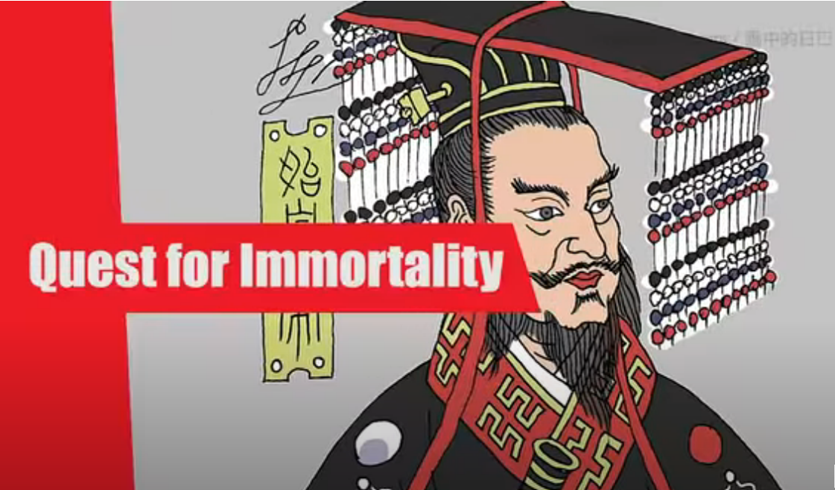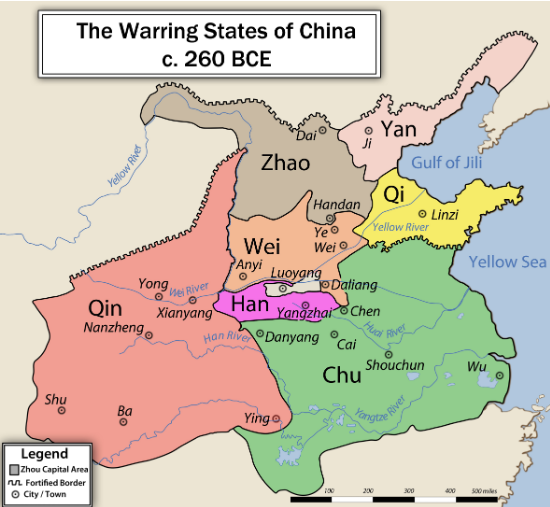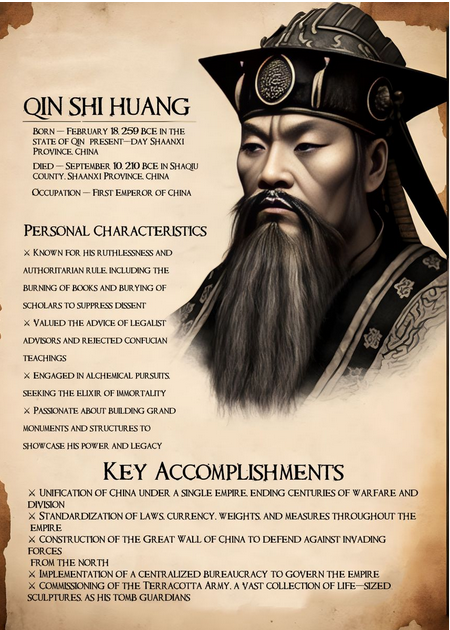 By Neenah Payne
By Neenah Payne
How China Created The Modern World discusses some of China’s amazing contributions to the modern world and points out, “We must certainly admit that many of the inventions and discoveries upon which the modern world rests come from the great minds of ancient China. Will we have to re-write the history books and will we have to re-think everything we thought we knew about the ancient world?”
China is now one of the largest countries with history that stretches back over 2,000 years. Since China is assuming an increasingly important role on the world stage now, it’s worth taking time to know more about the history of this ancient culture. Chinese civilization first appeared on the banks of the Yellow River during the Bronze Age and developed into small kingdoms, warring empires, and centralized states several times. The history of China is often split into “dynasties” depending on which family ruled as emperors — similar to the reign of royal families in medieval Europe.
China was created over 2,000 years ago when Ying Zheng (259-210 BCE) from the Chin province united the seven warring states of Chin, Zhao, Wei, Han, Chu, Yan, and Qi. Many great kings had tried to forge a nation of those states, but had failed. He became Emperor Qin Shi Huang, the first emperor of China. As a founder of the powerful Qin Dynasty (221-207), he was the first monarch in China to be called an emperor. “Shi Huang” is not a proper name, but a title that means “First Emperor”.
Huang unified a country with ten times as many people as those of the pharaohs of ancient Egypt to create China — an empire that has outlasted Rome (27 BC – 476 AD) by over 1,700 years. For the first time, the nation was unified with a single written language and a system of administration that are still used today. Huang divided the empire of China into 36 districts, each overseen by three officials and a judge who enforced the emperor’s laws. Qin Shi Huang standardized the Qin script and unified the currency and units of measurement. He built a series of transport links such as roads and the impressive Lingqu canal.
The Warring States of China circa 260 BCE
Qin Shi Huang laid the basic structure of China’s political system for the next 2,000 years. He had the Great Wall of China built to keep out Xiongnu tribes from the north and to seal the empire he had established. It was the biggest building project of the ancient world at 30 feet high and 2,000 miles long. At its peak of production, over a million people were enslaved to build the wall – perhaps 25% died in the process.
Eventually, Huang became increasingly obsessed with finding the secret of immortality. He died in 210 BCE on an expedition to find a fabled island to the east of China where the gods lived. Huang’s obsession led him to create one of the most ambitious building projects of Ancient China which includes the Terracotta Army. A vast number (over 8,000) of life-sized and realistic clay soldiers made of terracotta were manufactured were buried with the First Emperor because he believed they would come to life in the afterlife and serve as his army. Huang created the largest mausoleum on Earth The Terracotta Army Tomb that was discovered on March 29, 1974.
When Qin Shi Huang founded the imperial dynasties of China, he became the most powerful man on Earth, one of the world’s greatest legends who left a legacy the like of which has never been seen before or since. The videos below provide a deep dive into the story of China’s first emperor.
Qin Shi Huang: The First Emperor of China
The Complete Story Of Qin Shi Huang: China’s First Emperor | Timeline 7/18/20
Qin Shi Huangdi. He is the man who united, and indeed gave China its name. He conquered six powerful warring states and, in 221 BC, declared himself emperor of all China. During his reign, he introduced sweeping reforms, built a vast network of roads and connected the Great Wall of China which to this day stretches over 2400 kilometers.
His legacy not only includes the Great Wall, but also his astonishing tomb, guarded by the famed Terracotta Army constructed almost 2,200 years ago. This major drama-documentary offers unprecedented access to new excavations at the major sites, and through major dramatic reconstruction narrates how Ying Zheng became the king of Qin state at 13 and the first Chinese Emperor. It reveals the personality and motivations of this remarkable but still unknown leader.
Fascinating Terracotta Army and Tomb
Chin’s amazing mausoleum lay undetected for over 2,000 years until farmers digging a well stumbled on it in 1974! The compound is over 20 square miles and only about 1% of the emperor’s tomb has been excavated! In 2020, another 6,000 soldiers and horses were discovered. All the soldiers were originally painted in bright colors. However, they quickly oxidized when exposed to air. Each terracotta warrior is estimated to be worth $4.5 million or about $36 billion for the entire army of 8,000 soldiers. However, the total value is closer to $50 billion because of the chariots, horses, weapons, and other figures.
Fascinating Facts About China’s Terracotta Army 2/5/21
Qin Shi Huang, the first emperor of China, built the huge Terracotta Army to protect him in the afterlife. An elaborate tomb complex in Xi’an, the city-size compound came equipped with everything the emperor would require in the afterlife.
Like the Egyptians, the ancient Chinese believed the items they took with them to the grave would accompany them into the afterlife. But instead of burying actual people with him underground, the emperor created clay reproductions of warriors, servants, horses, and other objects. An incredible feat of design, the army also features a number of ancient Chinese inventions, many of which no one realized dated back as far as the Qin dynasty.
Impact of The Tomb’s Discovery
Huang’s amazing mausoleum catapulted China on the world stage in 1974. It is considered the Eighth Wonder of the Ancient World.
The Curse of the Terracotta Warriors – Full Documentary – Free Movie 2/24/22
Yang Siwa (or Shifa), the farmer who discovered the terracotta warriors when digging a well in 1974, was then trained by the archeologists to help excavate the site and became a member of the excavation team in 1976. Eventually, Yang landed a job in a museum autographing books and became honorary curator of the museum.
Yang’s wife said that when people learn that the discovery was made by Yang villagers, some are really curious about who actually made the discovery – “Who was that farmer?”. So, many tourists came to visit Yang and his wife. Many TV reporters, including foreign ones, came to interview them. On June 26, 1998, Yang met President Bill Clinton and a photo was taken of them. His wife said Zang used to be very healthy but after 16 years working in the museum, he had heart disease and got a pacemaker. When he was working in the museum, he often caught a cold or got a fever. Now, he signs books at home.
As many as nine farmers claimed to also be discoverers and wanted jobs signing books – even if they didn’t yet know how to write their names! Now, only three are still alive. Zhao Kangmin, former curator of the Lintong County Museum, who was the first to understand the importance of the discovery, issued informal “Discover Certificates” to four farmers to encourage local people to protect artefacts. However, he considers himself the real discover since he understood the importance of the figures.
Xian, the ancient capital of China, has become a tourist mecca and has been the center of the tourist industry in Shaanxi province. Before the discovery, all the homes were cheap mud houses and people were poor without sufficient food. After the discovery, the villagers became wealthy from the tourism. Now, there are new apartments everywhere! Farms and homes gave way to museums and parks. When countless visitors began coming, the villagers switched to the tourism business. Some opened restaurants while others made trinkets. Big houses were built and lives improved.
The discovery has also changed the image of China in the world. Millions of visitors have come to China to see for themselves. The villagers thank Emperor Huang for making them rich! Indeed, he achieved the immortality he craved!
Discovering the Secrets of Emperor Qin’s Mausoleum 2/6/23
Discover the massive terracotta army, buried for centuries and revealing the grandeur of China’s first emperor, Qin Shi Huang. Uncover the history, mythology, and mystery of the tomb complex and its impact on our understanding of ancient China.
Treasures Of Qin Shi Huang And The Terracotta Army 6/9/21
Even more than 2,000 years after his reign, Emperor Qin Shi Huang of the Qin Dynasty has left treasures worth billions to be discovered in his tomb, buried more than 114 underground and rumoured to contain running rivers of poisonous mercury. That’s not the only thing protecting one of China’s most powerful emperors from being disturbed from his slumber. Protecting the tomb of the Emperor is a multi-billion-dollar Terracotta Army in a model of a subterranean city. Scientists and archaeologists have uncovered bronze weapons, chariots and thousands of clay warriors and horses. These Terracotta Warriors are vast in numbers and were once bright and colorful. Their weapons are still sharp and they reach heights of up to 2 meters.
Unearthing the Emperor’s army is one of the most vast archeological discoveries in the world, but his tomb has yet to be excavated because the technology to do so safely just doesn’t exist. According to Chinese historians, there are palaces, riches, and traps waiting for those who dare to enter. It’s no surprise that one of China’s richest rulers would have such an epic burial spot. The Mausoleum of Qin Shi Huang is only one of his most epic construction projects– he was also the emperor who led the construction of The Great Wall of China, estimated to have cost more than $95 billion today. Let’s explore the Terracotta Army that protects the Tomb of Emperor Qin Shi Huang, and discover what could be buried within the Emperor’s mysterious Mausoleum.
Terracotta Army-Ancient China-Real Faces-Part 1 4/10/21
A first look into the world of ancient China, examining, recreating the soldier’s faces in the Terracotta army, that was buried 2,221 years ago to protect the first emperor of China, Qin Shi Huang, in the afterlife. Done with digital painting and the help of several animation software.
The video below explains that an anti-rust chromium finish applied to the swords in the tomb was not available in the West until 2,000 years later. It has kept the weapons razor sharp and lethal. Each soldier weighs about 650 pounds.
The Terracotta Army-Ancient China – Part 2
The Eternal Army: The Terracotta Soldiers of the First Emperor
Amazon Description
A vast “army” of over 7,000 terracotta statues of soldiers surrounds the tomb of the first emperor of the Qin dynasty in the Shaanxi province in northwestern China. These vigilant soldiers have been on duty for 2,000 years, but does anyone know what sort of ruler Qin Shi Huang was? Why did his tomb have to be guarded by a mysterious army? Was Qin Shi Huang so power-hungry he sought control even over the spirit world? Why did he feel compelled to defend himself even in the next life?
Using the mausoleum structure as a key, the splendidly illustrated book answers many of the questions that have intrigued travelers, archaeologists, and students of Chinese culture since the site was discovered in 1974.This lavish, powerful volume explores the life and times of the man who founded a dynasty that would continue to the dawn of the 20th century. It gathers the most recent archaeological data with photographs taken on site expressly for this book– accompanied by essays from archaeologists and experts in Chinese art and history. What emerges is a profile of one of China’s most powerful, legendary figures and a new view of one of Asia’s most spectacular tourist attractions.
The video below explains that each terracotta warrior is worth $4.5 million. So, all 8,000 warriors are worth about $36 billion. If the horses, chariots, and other items are included, the value is about $50 billion.
7 Crazy FEATURES of the First Emperor of China’s Tomb
Why Scientists Are Scared of Opening The Tomb Of China’s First Emperor 8/11/23
Qin Shi Huang, the formidable first emperor of the Qin dynasty, who reigned from 221 to 210 BCE left behind a well-guarded tomb inside a masoleum. Cracking open the tomb could unleash immediate dangers, as ancient accounts reveal. The tomb is equipped with deadly traps, mechanisms designed to defend against any intruder.
The Amazing Great Wall of China
The video below explains that The Great Wall of China is the story of China itself. It is an astonishing military masterpiece to protect China from the nomads in the north. It was another visionary creation by Emperor Huang which spans 13,000 miles — long enough to stretch half way around the Earth!
The video says the latest technology has revelated that the wall is up to 36 feet high and is a complex military system — far more than a simple barrier. The original wall served to protect the Silk Road. Huang’s incredible construction was extended by the Han Dynasty and then by the Ming Dynasty over 1,000 years later. The Han Dynasty built their part of the wall in 206 BC – 1,500 years before Rome was founded and before Cleopatra ruled Egypt – that stretched for over 6,000 miles. Much of the Ming Dynasty wall was built on top.
Secrets Of The Great Wall | Ancient China From Above 9/30/20
Archaeologist Allan Maca leads a team of intrepid experts on an epic adventure to solve mysteries, explore secrets and reveal amazing wonders of Ancient China like never before.
Guided by images from space, cutting-edge technology on the ground, and the very latest excavations of Chinese archaeologists, they will reveal palaces and tombs, incredible megastructures and even entire long-lost cities.
Along the way they will uncover new revelations about The Great Wall of China, explore the myths of Xanadu, and unearth evidence of ancient civilisations—discovers that are rewriting the history books.
The videos below are a quick overview of China’s long and amazing history.
All China’s dynasties explained in 7 minutes (5,000 years of Chinese history)
All of China’s Dynasties in ONE Video – Chinese History 101
In this video we give you every Chinese Dynasty from around 2000 BC to the end of the imperial system in 1912.
Amazon Description
Qin Shi Huang (秦始皇, 259 BCE -210 BCE) was an ancient Chinese politician, strategist and a reformer. He defeated the six Warring States (Han, Zhao, Wei, Chu, Yan and Qi) and completed the political unification of China for the first time. For the first time in Chinese History, he established a unified, multi-ethnic country with the centralized power.
As a founder of the powerful Qin Dynasty (221 BCE -207 BCE), he was the first monarch in China to be called an emperor. The so-called “first emperor”, Qin Shi Huang Di, laid the basic structure of China’s political system for the coming two thousand years. The book, Chinese History 4, a Chinese reading practice book, presents a broad and simple overview of the life of Qin Shi Huang. In the accompanied book chapters, you’ll learn the life and legacies China’s first emperor.
Neenah Payne writes for Activist Post
Become a Patron!
Or support us at SubscribeStar
Donate cryptocurrency HERE
Subscribe to Activist Post for truth, peace, and freedom news. Follow us on SoMee, Telegram, HIVE, Minds, MeWe, Twitter – X, Gab, and What Really Happened.
Provide, Protect and Profit from what’s coming! Get a free issue of Counter Markets today.





Be the first to comment on "China’s First Emperor: Qin Shi Huang"